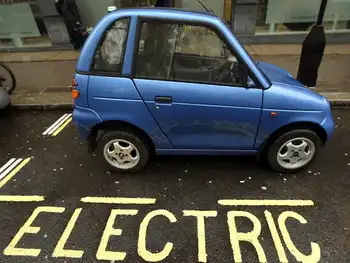Internet 'brownouts' feared
By Toronto Star
NFPA 70e Training - Arc Flash
Our customized live online or in‑person group training can be delivered to your staff at your location.

- Live Online
- 6 hours Instructor-led
- Group Training Available
Despite all the talk about the Internet's infinite possibilities, a study by U.S. firm Nemertes Research found that projected increases in Internet traffic are poised to eclipse the capacity of the Web's broadband access infrastructure – essentially the points where users "plug in" to the Internet via cable, phone or fibre optic lines – as early as 2010.
The study predicts that, in the absence of billions worth of new investments, Internet users will begin to notice a marked degradation in their online experiences within three to five years as bandwidth-heavy applications such as VoIP (Voice-over Internet Protocol), video-on-demand and various file-sharing schemes become more popular among individuals and corporations alike.
That could take the form of Web pages that take longer to load, interruptions in videos that are downloaded or streamed and stalled e-commerce transactions, said Mike Jude, a senior analyst with Nemertes. "If we don't do anything, we're going to start looking like the dying days of dial-up access," he said.
"The Internet won't fail, but it will degrade. Our expectation is that around 2010 or 2011, that degradation will become apparent to most users."
Nemertes said it received funding for the study from its client base of vendors, service providers, and not-for-profit organizations in the industry.
That includes the Internet Innovation Alliance, which some have criticized as being biased in favour of the U.S. telecommunications industry.
The study warns that the North American economy may suffer if Internet entrepreneurs are prevented from developing the next so-called "killer application" such as Google's market-dominating search engine, Facebook's rapidly growing social networking tool or eBay's popular auction site.
The concern is not that the Internet's core optical backbone, or trunk lines, can't handle the extra traffic, but that there are limitations at the "edge" of the Web where service providers, including telephone and cable operators, deploy switching equipment and networks of broadband "pipes" that connect to homes and businesses.
In order to keep things flowing smoothly, the study forecasts that service providers in the United States alone will need to spend as much as $55 billion (US) over and above the $72 billion (US) they were already planning to invest in broadband access.
Globally, the required investment by telecommunications and cable firms is estimated to be $137 billion (US), according to the study.
There is much discussion in the North American industry about what to do about the infamous "last mile," or the part of the network that extends from service providers' switching equipment to tens of thousands of homes within a given service area.
Since few homes are connected directly to high-bandwidth fibre optic lines, but have aging copper telephone wires or cable lines, there's a limit to how much Internet capacity can be delivered to customers alongside other services, creating an Internet bottleneck.
In the U.S., Verizon Communications Inc. has decided to spend millions bringing fibre optic cables to the home – a painstaking process that will require rewiring of entire neighbourhoods, house by house.
In Canada, meanwhile, there's speculation that Bell Canada Inc. and Telus Corp. may opt for a similar strategy in key markets in order to better compete with cable operators, whose lines have greater bandwidth capabilities.
Jude said researchers arrived at their conclusions by comparing published industry figures pertaining to planned infrastructure investments and comparing them to traffic growth projections culled from historical data and interviews with businesses about their plans for the Web.
One thing the study does not take into account, however, is the emergence of new technologies that improves the efficiency of existing infrastructure or new methods of broadband access such as wireless.
Critics seized upon the omission.
"I think it's a little premature to suggest that at 2010 we're going to hit a crossover point and all of sudden things are going to slow down," said Carmi Levy, the senior vice-president of strategic consulting for AR Communications Inc.
"I think that significantly underestimates the capability of the market to introduce products and services to meet this growing demand."
Levy noted that the industry has so far easily kept pace with demand.











